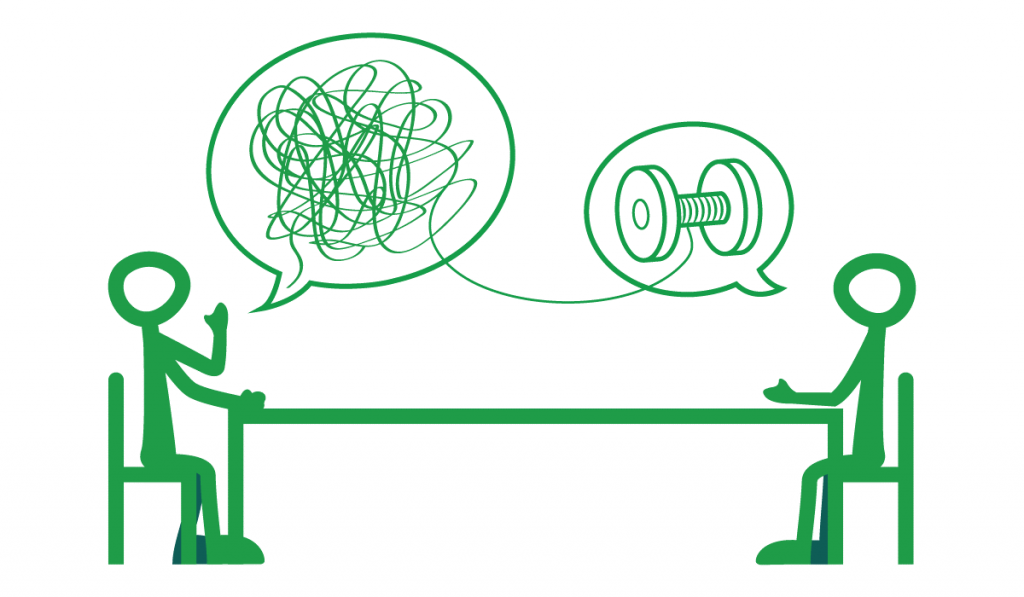Resilience in the Post COVID-19 Era – The Need for Coaching

What is resilience? The answers to this question can vary from flexibility, to bouncing back, recover quickly from setbacks or dealing with positive emotions like love, gratitude or seeking deeper meaning in life, feeling larger than self. It is not a stress elimination strategy but allows you to accept, acknowledge and move forward in life with adversity. The resilience level varies from person to person as it depends on the nature and the type of setback, impact it has had on personal and professional life.
With COVID-19, almost all businesses have had setbacks whether you operate as a small sole proprietary business or a large listed organization operating locally or internationally. Some businesses are coping with it better than the others as they had resilience mechanisms in place. In this situation there was a choice of options Plan B or the Plan C and some organizations even have gone to Plan D. The senior leadership team is today being more stressed out, worried, fearful when dealing with this volatility, the uncertainties, the complexities and the ambiguities. This has led to being more reactive, aggressive, and playing the blame game more often than others and have taken some drastic measures such as layoffs, downsizing , pay cuts and focusing on survival than growth.

This is where coaching comes into to assist the organizations and senior leadership team.
According to the International Coaching Federation (www.coachfederation.org) coaching is an ongoing partnership designed to help clients produce fulfilling results in their personal and professional lives. A coach helps to improve the work performance and enhance the quality of life by using a process of inquiry and personal discovery to build the client’s level of awareness and responsibility, as well as provides the client with structure, support, and effective feedback. Thus, coaching is a process of discovery, goal-setting and strategic action that leads to extraordinary results. This is achieved by helping the client establish what is important to them and by clarifying their values. With the client’s input the coach co-creates value based goals and a plan to achieve them. Through collaboration, the coach supports the client to achieve these goals.This is where coaching will come in (Global Coaching Trust).

Coaching is not psychotherapy or counselling. One of the most obvious differences is that therapy tends to focus on feelings and experiences related to past events, whereas coaching is oriented towards goal setting and encourages the client to move forward. A coach works with a functional person to get them to become exceptional. A coach works with people who are already emotionally healthy to move them to magnificent levels. Coaching does not rely on past issues for achieving growth, but rather focuses on goals towards the future. Coaching is action oriented. The focus is on where the client is right now, where they want to be next, and how to get them there.
Let’s look at the following metaphor of driving a car highlight the relationship difference
A therapist will explore what is stopping you from driving your car
A counsellor will listen to your anxieties about the car
A mentor will share tips from his or her own experience of driving cars
A consultant will advise you on how to drive the car
A coach will encourage and support you in driving the car
According to research by Turner (2006), executives identified five significant benefits of executive coaching as a leadership strategy. These benefits were
- Continuous one-on-one attention;
- Expanded thinking through dialogue with a curious outsider;
- Self-awareness, including blind spots;
- Personal accountability for development;
- Just-in-time learning.
Methodology /The Coaching Process
Dialogue, fuelled through powerful questions, is at the heart of the coaching process. In coaching conversations, managers think aloud, become more reflective, and gain access to their own tacit knowledge and unexplored ideas. The coach’s role is to act as a sounding board, confidant, partner, challenger, and catalyst for change. The emphasis in coaching is on building the manager’s ability to deal with the issues using his or her own decision-making skills, as against telling him or her specific actions to undertake. Since coaching addresses specific performance or behavioral gaps, it is more effective than general-purpose training because it gives high-performing busy managers an opportunity to reflect on feedback, focus on developing goals, and have someone to hold them accountable for executing their goals. The confidential coaching relationship also creates a safe space for managers to share their concerns.
Managers who engage in a coaching relationship can expect to experience fresh perspectives on personal challenges and opportunities, enhanced thinking and decision making skills, enhanced interpersonal effectiveness, and increased confidence in carrying out their chosen work and life roles. Based on the client’s needs, the coach develops a customized program that varies in time (3 – 6 months) and scope. While coaching can be done face-to-face, the international practice is that most coaching is done through scheduled telephonic conversations. This saves the client time and effort in commuting and enables coaching in the privacy of the client’s home or office. It also removes geographical constraints as much coaching happens across national borders and time zones. Typically, 45- 60 minute telephone conversations or face to face times are scheduled up to four times a month, depending on the scope of the engagement. Most engagements are initiated with an exploratory session in which the coach and client get to know each other, explore initial needs, and discuss the logistics and process. The exploratory session gives the client an opportunity to evaluate his or her comfort level with the coach and the process.
Coaching Techniques and Skills
In coaching the techniques of listening, questioning, clarifying and giving feedback are essential to make the coaching process work effectively.
Listening has many levels,
- Level 1- Waiting for your turn to speak
Planning what to say instead of listening to what the speaker is saying. The
speaker can notice that the listener is not listening by observing the body
language and words spoken
- Level 2- Giving your own experience
Giving a reply about the listener, nor the speaker.
- Level 3- Giving advice
This is still more about the listener than speaker and can be right because the
listener has not explored the speaker’s real issue
- Level 4-Listening and asking more
Ask questions to clarify the message
- Level 5- Active Listening
The speaker’s thought processes are activated by promoting questions
Questioning
- In coaching questioning is a very powerful tool. This includes what, how, where, when and why questions directed as open clarifying questions to make the coach think differently. It is always encouraged to have open questions than closed questions towards a better dialogue.
Clarifying
- Is the art of para-phrasing the words spoken by the coachee and summarizing and reflecting?
Coaching Models and Frameworks
There are multiple level models and frameworks used by various coaching institutions, schools and coaching professionals. During times of adversity where resilience is a core competency as it is important to use these Models and Framework wisely by coaches.
Most widely used Model is the GROW Model which focusses on:

Goals – coach and client agree on specific objectives. This is vital in coaching – if you don’t know where you are going, you will probably end up somewhere else! The coach asks specific questions to make sure that the goal is in the best interests of the client and those closest to them
Reality – the client needs to have a realistic grasp of where they are now, where they are starting from. Is the desired objective a realistic goal – what are the chances of achieving it? Do they know someone else who has achieved this already?
Options – the coach guides the client in thinking of a number of ways of achieving the goal and the client decides which way to pursue. As the coach, you are not there to lead people, you are there to help them explore possibilities so they can decide which option is best for them.
Way forward / Will – the client will only be motivated to go for the goal if they are excited and motivated by it. Coach and client look at the possible obstacles and how these can be overcome. Is there a secondary gain in the client not achieving the goal? For instance, it may be more comfortable to remain in the current position than make the effort it takes to achieve the goal.
Evaluation
When evaluating the impact of coaching number of approaches are used. One such approach is given below. A widely used techniques is 360◦feedback obtained from Peers, Boss, Direct Reports, Service Providers before and after the coaching where Individual transformation is seen in an organizational context in term of change in behaviors, attitude, communication style and in performance.

Finally coaching is NOT for all. Since it’s a two way process both the Coach and the Coachee both need to be committed. It is not a way to give negative feedback on poor performance in an organization and replacement of currently organizational development initiatives.
In our next article we will deep dive into how coaching is done using various approaches.
(Dr. Mahesh Jayasinghe is a Professionally Certified Coach (PCC) from International Coach Federation (ICF) with over 10 years coaching experience in Private, Public, NGOs, Professional bodies, Universities and Schools. He is one of the first certified (PCC) coaches in Sri Lanka and was recently awarded Sri Lanka’s Top Coaching leader by the World HRD Congress in 2018 and was ranked among the 101 Best Global Coaching Leaders by World Coaching Congress in 2020. He has served as an Executive Committee Member of MBA Alumni Association of University of Colombo. He can be contacted on maheshvipulaj@gmail.com)
